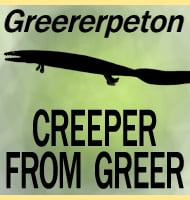In Depth
Potentially, Aetosauroides is one of the oldest aetosaurs currently known, and is comparable in age to other genera such as Stagonolepis and Aetobarbakinoides. In fact Aetosauroides has been suggested to be a synonym to Stagonolepis on more than one occasion, though the wider consensus is that it is actually a separate genus. As an aetosaur, Aetosauroides would have been a squat quadrupedal reptile that had a covering of bony osetoderm armour along its back to protect it from the teeth of predators.
Further Reading
- South American occurrences of the Adamanian (Late Triassic: latest Carnian) index taxon Stagonolepis (Archosauria: Aetosauria) and their biochronological significance - A. B. Heckert & S. G. Lucas - 2002. - Reassessment of the Aetosaur “Desmatosuchus” chamaensis with a reanalysis of the phylogeny of the Aetosauria (Archosauria:Pseudosuchia) - William G. Parker - 2007. - A reappraisal of the taxonomic status of Aetosauroides (Archosauria, Aetosauria) specimens from the Late Triassic of South America and their proposed synonymy with Stagonolepis - J. B. Desojo & M. D. Ezcurra - 2011. – Osteology of the first skull of Aetosauroides scagliai Casamiquela 1960 (Archosauria: Aetosauria) from the Upper Triassic of southern Brazil (Hyperodapedon Assemblage Zone) and its phylogenetic importance. – Plos One – Ana Carolina Biacchi Brust & Julia Brenda Desojo – 2018.









